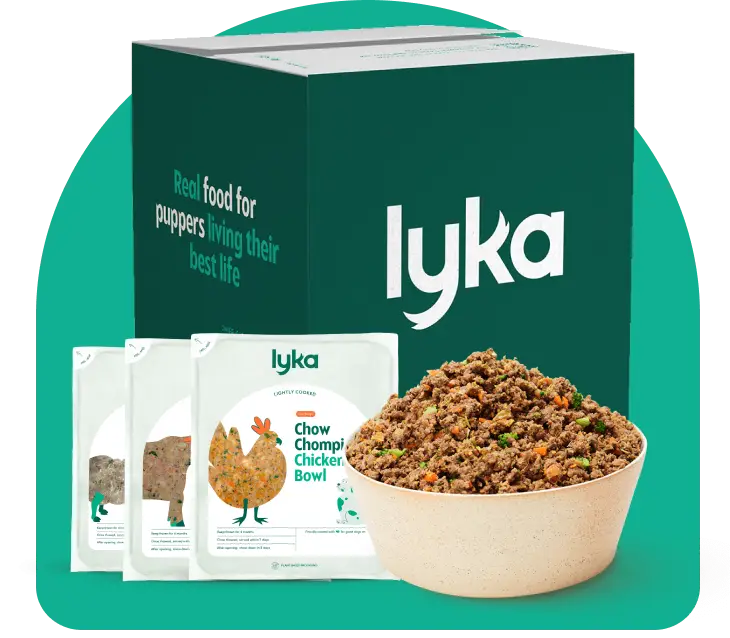Should my dog be eating grains?

By Anna Podolsky

Grains in dog food is a widely contested topic, and there is no consensus from the vet community as to whether dogs should be eating them. Some argue that because dogs’ ancestors didn’t eat grains, that our dogs shouldn’t either. Others argue that dogs can digest grains just as well as other foods, therefore eating grains will not cause them harm. It’s important to remember that not all grains are created equal: some are great for dogs in moderation, while others are best avoided.
We recommend taking a look at the facts that we do know about feeding grains to dogs.
Dogs’ ancestors didn’t eat grains
From a purely biological perspective, dogs’ ancestors, wolves, would not have eaten any grains as part of their diet. They consumed their prey in its entirety (including its stomach contents) and supplemented it with small amounts of other foods such as herbs, nuts and seeds.
Most dogs can digest grains, but many have trouble with gluten
Studies have shown that dogs do digest grains in commercial food1 , at a rate comparable to other food groups. On the other hand, allergic reactions to gluten or other gluten intolerances are common among dogs. Gluten is found in grains such as wheat and rye.
Other food groups, such as meats, provide more nutrition than grains do
Even though grains are highly digestible, they are not considered to be an essential part of a dog’s diet. Grains are typically high in carbohydrates and are limited in other nutrients. This is particularly true for heavily commercialised grains, such as rice, corn and soy.
In contrast, other foods such meats, vegetables and seeds are filled with important proteins, fats, vitamins and minerals. Some dog food producers use cheap grains like wheat and rice in proportions as high as 50%, which means that your dog is missing out on potential nutrients due to the high proportion of grain.
Many grains are GMO, and have even fewer nutrients than typical grains
Most of the common grains found in dog food are GMO (genetically modified organisms). This is particularly true for grains such as wheat, oats, corn, rice and soy. GMO foods are modified to produce more favourable crops at a lower cost. Unfortunately, because of these modifications, the crops typically have fewer nutrients than the natural crops. GMO foods are often subject to heavy pesticide treatment, and the consequences of eating such foods are largely unknown.
Not all grains are created equal
Grains encompass a big category of foods, and while they are high in carbohydrates, they can still offer health benefits to your dog. Including some grains in your dog’s diet may help to boost microbiome diversity, which can help with your dog’s overall health and wellness.
Every dog needs fibre to regulate their digestion. Fibre regulates intestinal transit time, so it can help with both constipation and diarrhoea. It also helps to reduce overgrowth of bad bacteria in the colon. Ancient grains like quinoa, are a great way to get fibre into your dog’s diet. Not only are they tasty, but they offer great health benefits, including antioxidants which reduce inflammation and help to prevent free radical damage.
What does this mean for your dog?
While grains are not an essential part of your dog’s diet, some grains may still offer them nutritional benefits. Common pet food additives like wheat, soy and rice may be high in fibre, but don’t offer much else in the way of health benefits. If you are feeding grains, ancient grains such as quinoa, barley and millet are better options as they also contain phytonutrients.
If you choose to feed your dog grain-free foods, look out for the proportion of carbohydrates. Many dog food labels won’t state the actual proportion of carbohydrates on the label, but you can calculate this easily by subtracting the percentages of the other components on the label from the total of 100%, with the remainder being the approximate level of carbohydrates in the meals. Not only do grain-free dry foods contain high levels of carbohydrates, many contain even more than foods with grains, as the dry food still requires a high level of starch for production.
Another thing to look out for on the ingredients list of your dog’s grain-free food is legumes. While legumes can be healthy for your dog if they make up a small proportion of their diet, many dry dog foods, particularly those which are grain-free, use a very high proportion of legumes in their recipes. High levels of legumes in dog food have been linked to a serious heart condition called dilated cardiomyopathy (DCM), as they can decrease their levels of taurine, an essential amino acid. Beet pulp is another ingredient to look out for, as it has also been shown to decrease taurine levels.
Grains in Lyka meals
Here at Lyka, we believe that a small amount of ancient grains in your pup’s meals can boost gut microbiome health and offer up helpful antioxidants and phytonutrients. Our grain levels do not exceed 7% (dry matter) in any of our recipes, and most of our carbohydrate content comes from vegetables like purple sweet potato. You can find organic white quinoa in our Barn Raised Turkey Bowl and black barley in our Grass-Fed Lamb Bowl.
If you’d still like to feed your dog grain-free food, our Grass Fed Beef Bowl and our Free Range Chicken Bowl contain no grains. To learn more about our food, build your Starter Box today.
1 Gross KL, Burchett S, Harmon DL, et al. Effect of altering starch cook and resistant starch content of extruded food products on nutrient digestibility in the dog (abstract). Journal of Veterinary Internal Medicine 1998; 12: 241







